Geared Up: Wish List
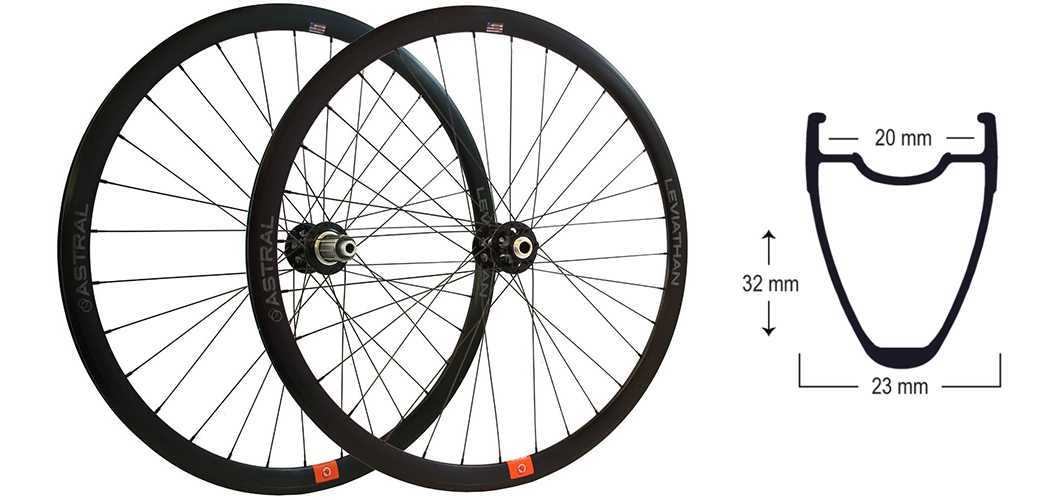
Astral Leviathan wheels, $1,050
A nice set of wheels can go a long way to waking up an otherwise tired, old bike, and Astral’s Leviathan touring wheels did exactly that to my tired, old Surly Cross-Check. The Leviathan aluminum rims — not just made in the U.S., but extruded and machined in Eugene, Oregon — are hand-laced with 32 bladed steel spokes to White Industries T11 hubs (also made in the U.S.), making for a strong, stiff, and relatively lightweight wheelset that’s about as American-made as you’re gonna find.
The Leviathans arrived tubeless ready, taped, and with tubeless valves installed, which was convenient. Getting my tires on, though, was less than convenient. I had a heck of a time getting WTB Riddlers on the rims, and once I did, I couldn’t get the bead to seat properly regardless of how much air I pumped into the tires. Finally, I just let them sit at high pressure and the beads eventually popped into place on their own. Later, I had trouble getting the tires to hold air, but tightening the valves solved that problem.
At nearly 1,900g claimed weight, the Leviathans are pretty light considering their intentions. If you’re planning to load up for a big ride, it’s good to have sturdy wheels you can rely on. I put these wheels through the wringer, riding fully loaded (sometimes carrying a bundle of firewood) and often on rough, rocky dirt roads that I would usually ride my mountain bike on, and they didn’t flinch. At the end of the testing period, they were still straight and true.
No doubt, $1,000 is a lot of money for wheels, especially when there are so many options these days. But if you’re looking for high-quality parts made in the good old U.S. and A, the Leviathans are the way to go. –Dan Meyer
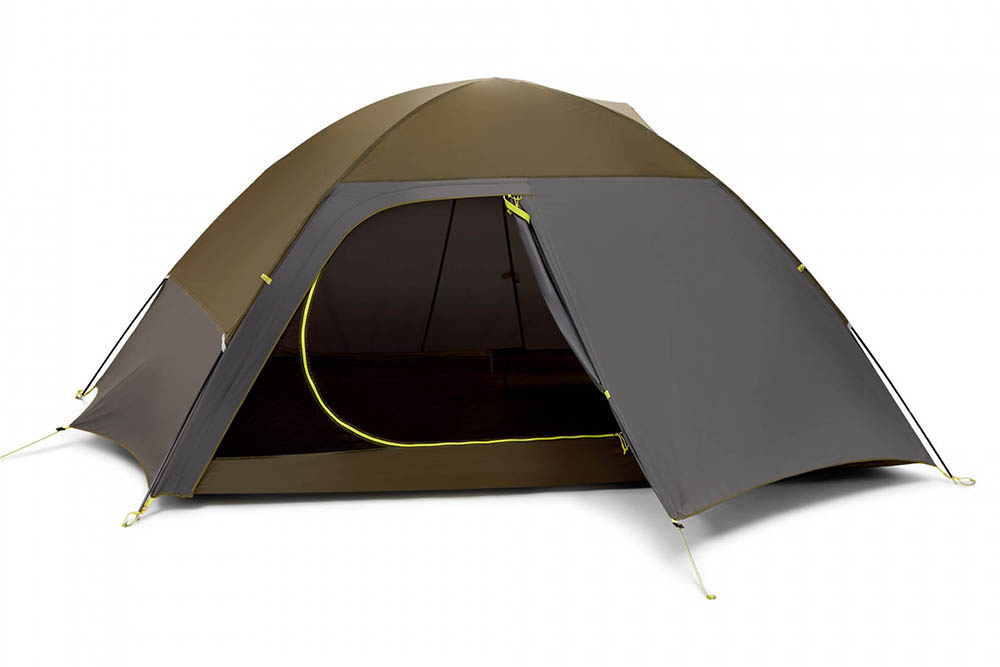
Vargo No-Fly 2P Tent, $500
In bike touring circles, Vargo is best known for its titanium stoves, pots, and mugs. But you might not know that Vargo also makes a tent. And it’s not made of titanium.
Vargo describes the No-Fly as a tent with an integrated fly (which makes the No-Fly title a little confusing), but it’s perhaps better understood as a single-wall shelter with an integrated mesh body and bathtub floor. This unique design makes for a tent that sets up and breaks down very quickly and easily, and because it’s freestanding, you can set it up just about anywhere. Using the stakes (which, naturally, are titanium) gives you two large vestibules and a taut structure with a bit more interior space. Speaking of space, the No-Fly is palatial inside, even for two people. As a bonus, the tent’s two poles are carbon fiber, which are feathery light and short enough to fit in most framebags and panniers. Packed weight is less than three pounds, which is great for a tent this spacious. Because of the integrated design, it’s a little bulky though. I found it easier to separate the tent body from the poles and stakes for packing.
The downside to the No-Fly will be familiar to anyone who has experience with single-wall shelters — chiefly, condensation. The Vargo tent has good ventilation, especially if you open the vent at the top, but even then, condensation will build up on the interior walls. Unfortunately, the tent’s design has a big flaw if you manage to get a lot of condensation inside: there’s a seam running horizontally where the integrated mesh meets the bathtub floor at the head and foot of the tent. While camping next to a river, I awoke one morning to witness rivulets of condensation running down the inside wall, hitting that seam, and then dropping directly onto my head. Also onto my feet at the other end. That was the one and only time I forgot to open the top vent before I went to sleep. The solution? Open the vent and set up farther from the river.
Otherwise, my time with the No-Fly was only positive. Five hundred dollars is a lot of money, but it’s about on par with other premium tents. And this one has the titanium stakes, carbon poles, and huge interior space to back it up. –DM
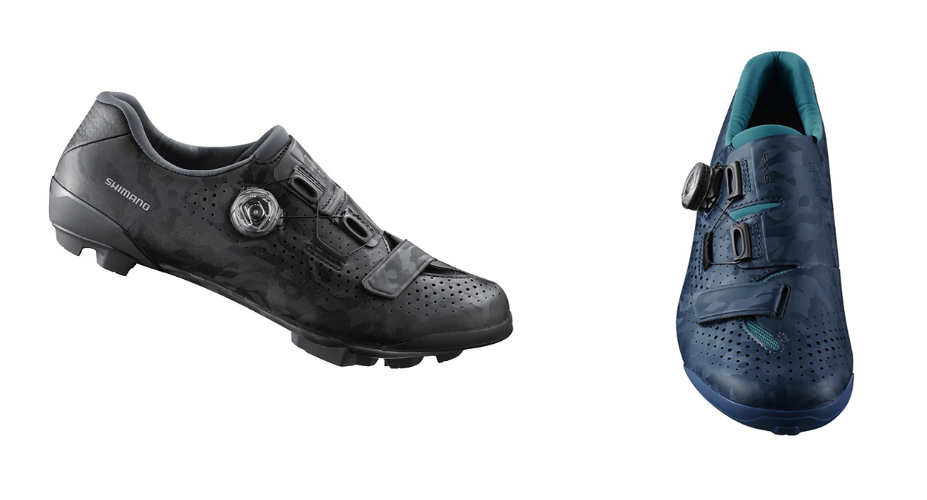
Shimano RX8 Gravel Shoes, $250
If your preferred touring footwear is a sandal, you might want to skip this one. But if your priority is on-bike comfort and performance, Shimano’s new “gravel and adventure” shoe could be for you. Truth be told, I don’t spend much time clipped in anymore, so logging miles in the RX8 was both a strange sensation and a reminder of the benefits of a stiff cycling shoe locked in to a pedal. The RX8’s specs read like a higher-end road shoe — price included — and a carbon sole and Boa closure might not be the best for a casual tour filled with stops. But for those logging miles and carrying a camp shoe ready for anything off the bike, the RX8 does indeed offer a stiff platform for power transfer, reasonable walkability, should the need arise, and an extremely tuneable fit. I was a Boa skeptic for a long time, but a pair of trail running shoes totally turned me around on the benefits of this cable closure. Where I expected pressure points I got a highly customizable fit, especially useful for my large but low-volume feet that typically require laces to be pulled to maximum tautness. The RX8’s Boa IP1 dial offers micro-adjustability for the wraparound-style upper, and getting out of the shoes is as simple as popping the dial outward to immediately release the cable. I found the RX8s comfy during consecutive long days on the bike, though you’ll want to limit the amount of hike-a-biking needed — as they’re certainly walkable but far from walking shoes. The RX8s are available in men’s and women’s sizes.
If the price is a little high for your tastes, watch for a review of the Pearl Izumi X-Alp Gravel shoe this spring (we expect it to fit similarly since Pearl is owned by Shimano), which features a nylon sole and Boa system for $150. –Alex Strickland
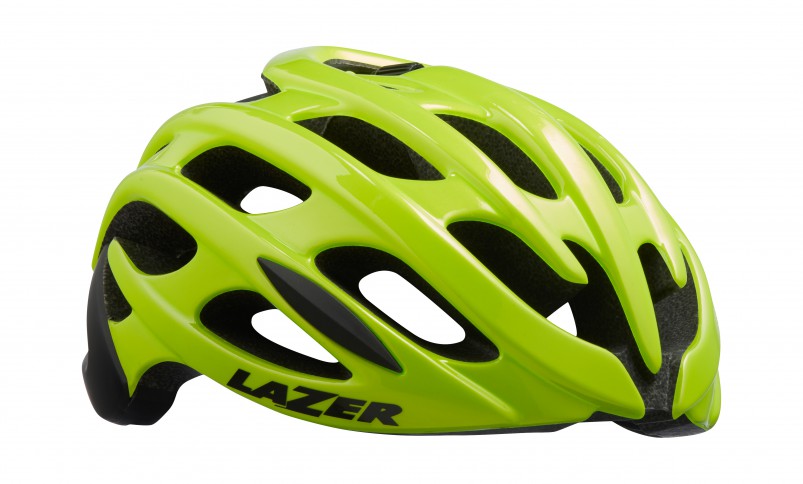
Lazer Blade+ MIPS, $100
Helmet fit is enormously subjective, and testing is really an evaluation of comfort — something that may only be applicable to the tester. But it’s nice to know what’s out there, especially in high-vis colorways. The Lazer Blade+ MIPS is a fairly standard road-style helmet with a MIPS liner, EPS foam construction, and a “Flash Yellow” color option that’s about as bright as a helmet can be. For a MIPS-equipped lid, $100 is a solid price, and a quick search indicates it often goes for closer to $75. Twenty-two vents keep things fairly airy in the heat, and the brand’s “Rollsys” fit adjustment dial works well to fine-tune sizing. As mentioned in previous helmet reviews, my extra-large dome often requires just that, an XL. But Lazer’s large fit very well and even left a little adjustment to spare should my ego swell. Though I often like a mountain bike–style lid with an integrated visor, Lazer’s road helmets work especially well with cycling caps underneath as the helmet’s front has a small rise that interfaces perfectly with a brim. That’s not always my preferred style, especially when it’s warm out, but if you love a cycling cap under your hard hat, the Blade+ seems tough to beat. –AS
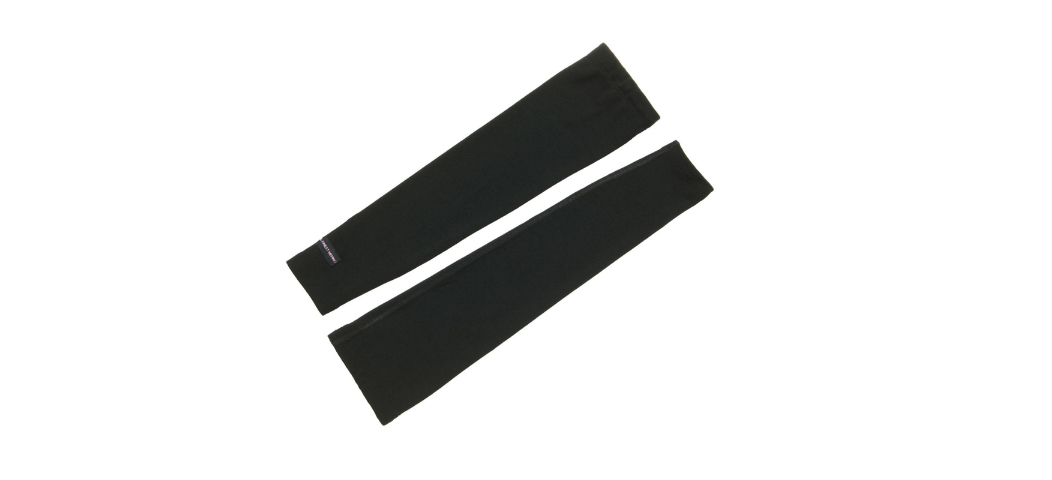
Rapha Merino Arm Warmers, $65
I fell in love with these lightweight, season-extending arm warmers years ago pedaling up classic Italian passes, including Stelvio, that started steamy and ended in snowfields. And though I have numerous sets of arm warmers in my drawer, these are the ones I always reach for. Made from durable, non-itchy Merino blended with just a touch of stretchy Lycra, they insulate without overheating, take the sting out of plunging temperatures and nipping wind, and even fend off a drizzle. Then when the sun comes out, you can pull them down or peel them off without having to change your jersey or carry around an extra layer. These arm warmers aren’t for standing around — they’re too air permeable. But when my body is generating heat from riding, I found they’re all I need. And they rarely need washing; wool is naturally antimicrobial so they rarely got stinky. –Berne Broudy
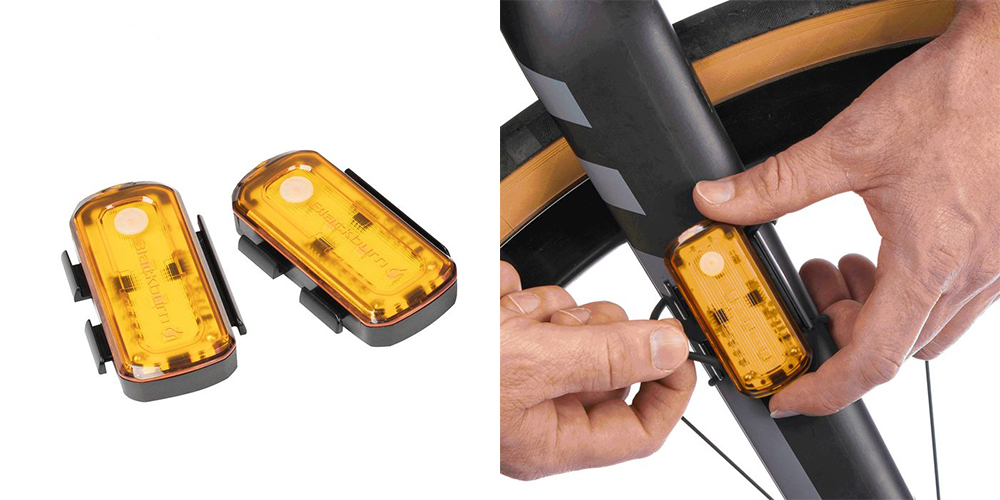
Blackburn Grid Side Beacon Lights, $55
Does your bike still have the wheel reflectors it came with? I’m going to guess not, as these plastic eyesores typically come off straight away (or aren’t installed by the customer from the legally mandated included parts). I know my bikes don’t have them anymore, though that also means that while my fore and aft visibility is pretty good thanks to lights, reflective clothing, etc., my side visibility is … not good. Not good at all. Blackburn suspects I’m not alone and made these amber LEDs to give you some high-viz side viz. It works. These things are bright (up to 80 lumens) and they’re something a little different. I noticed people noticing me on my daily commute at night and during the day, which is precisely the point. Attachment to fork legs with supplied rubber bands was a cinch and long runtimes (up to six hours in low strobe mode) mean I don’t have to pull them off to charge via USB very often. The Grid Side set might not have the battery to run all day every day on tour, but in lower light or through key locations, they offer an excellent option for some extra visibility that’s unlike anything else on the road. –AS
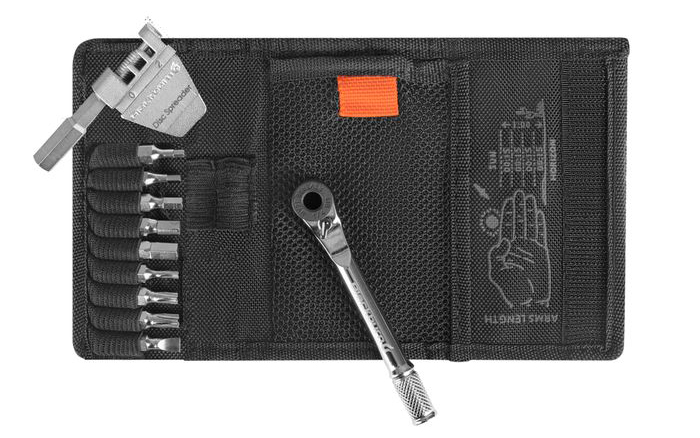
Blackburn Big Switch Ratchet Multitool, $45
Multitools can be tough to test, as the best-case scenario once you’ve thrown it into a bag is that its services will never be required. Well, lucky me, my first ride with the Big Switch on board demanded a pair of stops to test the tool in the wild. We’re big fans of ratcheting tools here at Adventure Cyclist on account of their versatility and sure grip for higher torque applications. However, like a shop Y-wrench, sometimes their shape isn’t ideal for the matter at hand. This was the case for my first issue, a loose water bottle cage. Happily, the Big Switch can also accept bits at the end of the handle to offer a vertical screwdriver-shaped option — perfect for reaching a small 3mm bolt through a cage (no ratcheting function in this position, you’ve got to spin it). The second field test was a more simple seatpost adjustment, though on account of a carbon post I was feeling a bit sensitive about over-torquing the clamp. This is entirely unscientific, but the angle offered by a ratcheting tool feels much less multitool-y when trying to judge torque by hand and offered a little extra confidence.
Luckily I didn’t have cause to use the included chain breaker, but it’s an excellent addition to carry for longer rides or multiday adventures alongside the nine included bits. Overall, the Big Switch offers everything I want in a multitool and carries it in a small, easily-contained package. The ability to replace worn bits, should the need arise, make this a top choice for me. –AS
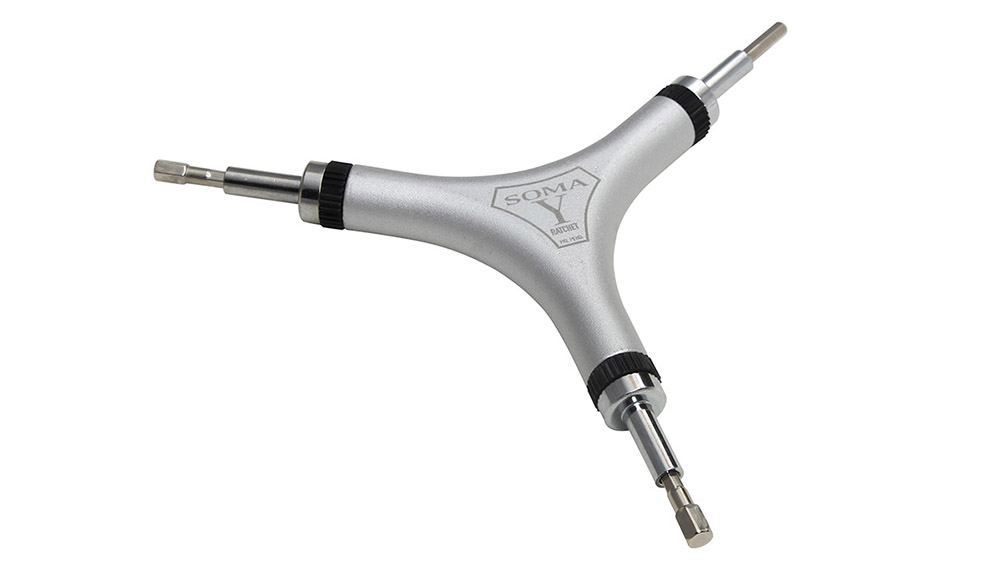
SOMA Fabrications Y-Ratchet Wrench, $25
I hate when something comes along that’s so obvious you’re forced to smack your own forehead for not thinking of it yourself, which is precisely what I did when I saw this ratcheting Y-wrench from SOMA Fabrication. If my small shed workshop contained nothing but a 4, 5, 6mm Y-wrench and a cassette tool, I think I could still get 99 percent of all repairs completed. But Y-wrenches can be a little tough to use in tight spaces or at very steep angles since you can only rotate them a few degrees before one side of the handle runs into something. Enter the Y-Ratchet, which can ratchet in either direction or lock out entirely. The Y-Ratchet has become my go-to tool, though some of that can be attributed to the crisp bits that haven’t been repeatedly dropped on the concrete floor by my fists of ham.
An observation and a quibble: first, this thing is BIG. Like, 30 percent larger than the other Y-wrenches in your toolbox. Not a bad thing, but I laughed out loud when I opened the box and saw it. And second, the bits are pressed in and nonreplaceable. In a past life, I helped an inventor launch a small multitool on Kickstarter with pressed-in bits and I remember how hard he worked to figure out the magnets, tolerances, etc., to allow for replaceable ones before throwing in the towel. It ain’t easy, so no fault to SOMA for their first-generation design. But I won’t lie, my fingers are crossed for a swappable version down the road, which would be the ultimate shop tool. –AS
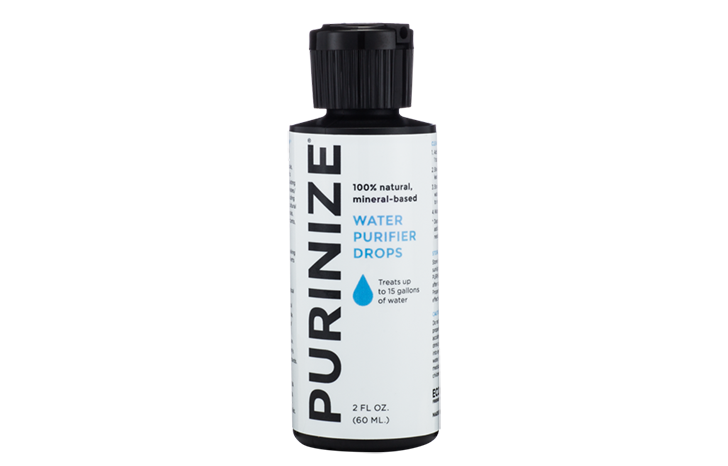
Purinize Water Purifier, $16
Filters are bulky, which makes chemical water purifiers a tempting alternative, except that they’re typically iodine, chlorine dioxide, or some other nasty-tasting chemical cocktail. Many have warnings not to drink too much if you’re a child or a pregnant woman, which makes me wonder if I want to drink them at all. Purinize is nontoxic, eco-friendly, and made from minerals. It never left a bad taste in my mouth, and it’s safe to drink as much Purinize-treated water as you want to, regardless of your age or health and wellness, and it’s safe for your pets too. The way it works: add 20 drops per liter, then let it sit an hour before you imbibe. The drops disinfect and clarify water, reducing or eliminating over 200 contaminants from bacteria, viruses, and protozoa to agricultural & industrial chemicals, heavy metals, and pharmaceuticals. So you can use it at home or abroad, in the backcountry or a city environment. My 2 oz. bottle treated 15 gallons of water and took up way less space in my bikepacking bags than even the most compact filter. I also bought the 8 oz. bottle for longer, hotter trips. I didn’t worry whether I had some left over. Purinize won’t lose its potency or effectiveness even after it’s been opened. –BB
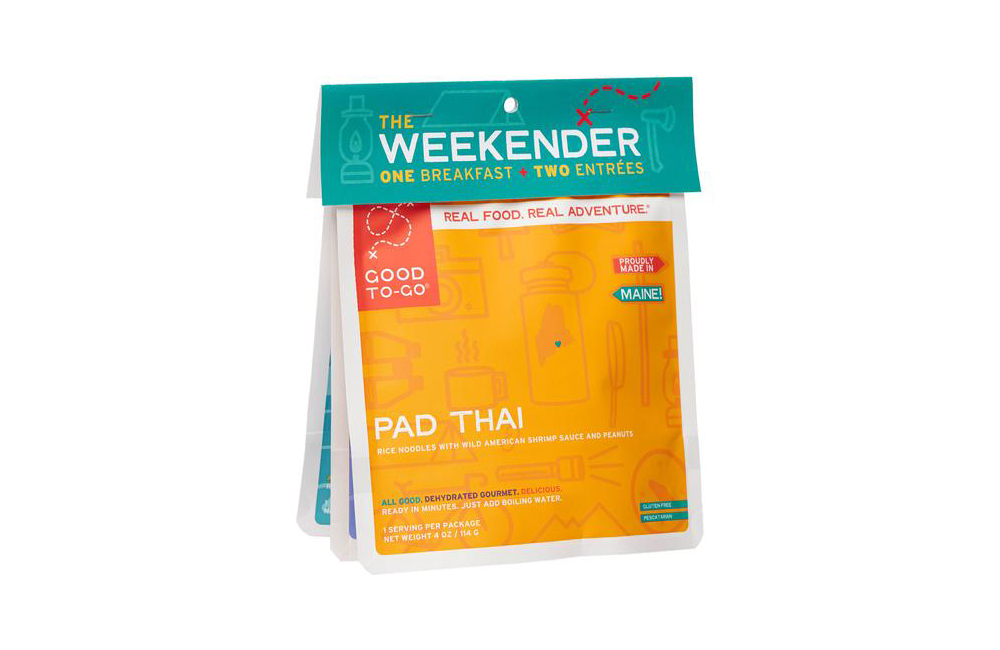
Good To-Go meals, $13 each
Dehydrated camping meals have come such a long way over the years that expectations are high. There’s no excuse for a bad meal anymore, especially when you’re paying $13, and bikepackers and backpackers alike expect to see healthy recipes and an ingredient list of things they recognize as food. That’s practically the mission statement for Good To-Go.
Good To-Go meals are all gluten-free, and even vegetarians and vegans have options. I tried a few different entrees, including pad thai, thai curry, and kale and white bean stew, and I found them all tasty and quick and easy to cook. They also serve two each — it says so right on the packaging. I didn’t take that seriously until I was midway through the pad thai. These meals pack small, but they’re a lot of food. Even after a hard day’s pedaling, I can only just get through one by myself. And I eat a lot. I usually keep a dehydrated meal or two on hand as a backup while touring, but the Good To-Go meals are good enough that now I don’t have to dread eating a backup for dinner. –DM


